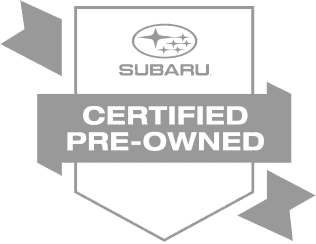
| 2017 Subaru Forester | 2017 Nissan Rogue |
| FRONT SHOULDER ROOM | |
| 57.0 in. | 56.6 in. |
| FUEL CAPACITY | |
| 15.9 gal. | 14.5 gal. |
| REAR SHOULDER ROOM | |
| 56.5 in. | 55.9 in. |
2017 Subaru Forester vs 2017 Nissan Rogue
Serving Harrisonburg, Dayton, and Massanetta Springs, VA
The compact crossover SUV is one of the popular vehicle categories among American car buyers. These vehicles offer roomy interiors while still being small enough to navigate through city streets and crowded parking lots. Eco-conscious buyers are attracted to these models because they get much better fuel economy than larger SUVs. Both the Subaru Forester and the Nissan Rogue are strong entries into this segment of the automotive market. The Rogue is more notable for its sporty and stylish appearance, but the Forester is well-known for being a practical and reliable vehicle.
Performance
In terms of horsepower, the Rogue and the Forester are equals. The Rogue comes with a 2.5 liter four-cylinder engine that produces 170 horsepower. The Forester has a standard 2.5-liter boxer-4 that delivers 170 horsepower. For buyers seeking more power, the Forester is the clear option because you can upgrade to a 2.0-liter turbo engine that will give you 250 horsepower. In addition, the Forester comes standard with a symmetrical all-wheel-drive system, which provides more stability in challenging weather conditions and better handling off-road. All-wheel drive is optional in the Rogue.
Interior
The Forester has been redesigned for 2017, and it has several interior features that make it stand out. For one, the thicker glass and acoustic windshield make for a quiet ride. The Rogue has a stylish and well-designed interior, but the ride noise can be loud when accelerating. The Forester only has two rows of seats. However, when comparing the Rogue's two-row seating to the Forester's, the Forester comes out ahead in terms of interior space.
Safety Features
Both the Rogue and the Forester offer an array of state-of-the-art safety features. The Rogue has a tire pressure monitoring system, blind spot warning, and rear cross traffic alert, and Nissan's Advanced Air Bag System. Buyers can also choose to add Nissan's Around View system, which allows drivers to view all angles of the vehicle from a dashboard monitor. The Forester comes with Subaru's EyeSight System, which includes lane departure warning, blind spot monitoring, rear cross traffic alert, and cruise control optimization. Subaru has updated the EyeSight System for 2017, giving it full-color cameras and a wider field of vision. Although both models have very good safety technology, the Forester's features are slightly more upgraded, especially on the Touring and Limited trim levels.
If you're thinking about purchasing a compact SUV, both the Forester and the Rogue are appealing options. Taking a Forester out for a test drive is the best way to check out all of its features. Stop by our dealership today to find out more information.





